游戏玩法如何激发玩家的创造力?(2)
作者:Eddy Léja-Six
富有创造性的解决方法
尽管在某些谜题解决关卡中,创造性能够有效地激发玩家的创造性思维,但却并不意味着任何谜题解决游戏玩法都具有创造性。聪明才智在《数独》等游戏中并不能派上用场。而具有创造性的玩家能够在像《蜡笔物理学》(Kloonigames)等游戏中具有更好的表现。
不管是面对何种游戏元素,谜题都具有客观性。当用户尝试着去克服某一障碍时,如果他知道某些可行的方法,他的创造性便会被激发出来,并因此相想出更多不同的解决方法。
这便引起了一个有趣的问题:如果游戏中只存在一种解决方法,玩家是否还会具有创造性?Jonah Lehrer使用复合远距离联想(CRA)去明确人们是何时以及如何使用创造性思维。尽管谜题只存在一种解决方法,但是人们会使用任何与之相关的理念去解决它。也许只提供一种解决方法的谜题更能激励玩家通过创造性思维去寻找解决方法。
谜题并不能识别并评定创造性。它们只是关于玩家最后想出的解决方法。即使是最具深度的谜题也不能保证玩家能够表现出创造性。谜题只能在游戏中提供给玩家发挥创造性并做出有趣选择的机会。而游戏将基于结构,关卡设计或时间设定去激发玩家的灵感。
当然了,在我们所谓的益智游戏中不一定总是能够找到具有创造性的解决方法。举个例子来说吧,比起玩《宝石迷阵闪电战》(PopCap),我们在《班卓熊:神奇螺丝》(Rare)中设计汽车时更能够发挥创造性思维。
创造性的程度则是基于我们所明确的一些元素:例如,《犰狳空间》(Peter Stock)比起之前的《奇妙大百科》,更能激发玩家的创造性。
这类型游戏的“始祖”便会在每个关卡中提供给玩家一套特别的道具。例如在《不可思议的机器》的第三个关卡中,玩家便只能使用一个篮球,一颗乒乓球,一只风箱以及一把剪刀去完成任务。《犰狳空间》也总是提供给玩家七种类型的道具,两种附加选择(电压/压缩器/计时器)以及一定数量的钱。
这种设置能让玩家更轻松地掌握游戏选择,并提供给他们更加自由的空间。同时这么做也能够通过关卡设计去激发玩家的灵感;也就是提供给玩家新问题,让他们去解决新的约束条件:如距离,高度,预算,障碍,时间等等。
许多游戏会给予具有创造性的玩家一定奖励。例如《机器人打擂台》(Gabriel),《链齿轮火箭》(www.crackingideas.com),《捣蛋猪》(Rovio)以及《鲍勃的飞船》(Ludosity)。但也有许多不一样的游戏类型,如《超级格斗》(Nabi Studios),《麦克斯与魔法标记》(Press Play),《魔法对阵》(Arrowhead),《Pontifex》(Chronic Logic)等。在所有的这些游戏中,创造性都不是游戏的目的,而只是玩家最重要的武器之一。
从这些例子中我们可以看出,创造性需要复杂的游戏系统作为推动力。并且这种开放式复杂性并不只是存在于谜题中。
策略是为了达成某一特定目标而设置的长期行动计划,或者是某一规划。所以它属于游戏玩法的“行动”,尽管面对种种障碍,游戏玩家也会通过制定并执行策略去达成目标。
如你所见,我并不是在谈论即时战略游戏或回合制策略游戏,如《横扫千军》(Cavedog)或《高级战争》(Intelligent System)。实际上,几乎任何一款游戏中都存在策略。例如在《耻辱》(Arkane),《杀手》(IO),《孤岛惊魂》(Crytek),《丧尸围城》(Capcom)或《刺客信条》(育碧)中的行动方案都具有策略性(或至少具有战略性)。
与解决谜题一样,策略也能够激发玩家的创造性。如果玩家掌握了可行的选择,并能够做出最合理的选择,那么任何意外的发现都能帮助他们到达最终目标。
与解决谜题一样,并非所有的策略都要求玩家使用创造性思维。技巧型玩家也许在许多游戏中能够执行一些简单的策略,但是只有真正具有深度创造性的玩家才能制定出富有成效的行动计划。例如史上最厉害的象棋玩家在经历了创造性思考后总是会叫出“啊哈”。
如此我们能够将策略和战术总结为是解决游戏中问题的创造性方法。
但是在任何游戏中,玩家需要花多长时间才能想出一个新想法?他们总是会反复使用相同的解决方法;甚至有些玩家会忽视任何创造性思维而解决上百种谜题并赢得上千次对抗。
如果游戏让玩家在一个熟悉的世界中拥有太多自由会出现怎样的情况?
沙箱
沙箱游戏(游戏邦注:指在陪伴者的陪伴和引导的同时,游戏者从玩具架上选择玩具,放进盛有沙子的箱子里创造作品的一种心理游戏)便侧重于给予玩家更多自由:让他们能够自由决定前进方向,目标以及过程等。
《模拟人生》(Maxis)和《侠盗猎车手》(Rockstar)便属于这类型游戏。这两款游戏最大的区别(除了对于女性角色的尊重)便是,《侠盗猎车手》混合了沙箱游戏与基于目标的讲故事游戏,而《模拟人生》则更像是一个巨大的玩具箱,不设定任何条款也不存在任何背景故事。
沙箱电子游戏主要是受到“沙箱”的启发。《沙箱》(Pixowl)便是一个很好的例子。
如果继策略和问题解决后,玩家还留有创造性思维,那就该沙箱上场了。的确,这些开放性系统留给玩家许多选择,并鼓励他们去选择属于自己的目标。结果便是,沙箱游戏经常包含各种类型的策略,战术以及问题解决方法。
沙箱将童年作为最纯粹的创造性的标志——尽管事实上,沙箱游戏玩家的表现与现实沙箱游戏中孩子们的表现并不相同。这些孩子们面对的只是沙子和自己的想象力。如果足够幸运的话还会有一些玩具,否则便只有一些隐藏的狗粪。
Aldous Huxley曾经写道:“沉默是潜在的智慧表现,就像一个精致的雕塑中一块未被磨削的大理石。”在空荡荡的沙箱中,孩子们就变成了游戏设计师。他们的目标是为自己的游戏体验设计工具。有时候也会包含某种形式的游戏玩法。
在沙箱电子游戏中,游戏正式开始前总会出现先各种内容,包括角色,环境,行为,能量,控制等。尽管在这里,沙子并不具有任何个性,但是所有的这些元素都将影响着玩家的心理状态。还有一种更有趣的比较对象,就是让一个孩子独自在玩具店挑选礼物。
游戏主题能够带给玩家灵感,其规则亦是如此。举个例子来说吧,《模拟人生》和《侠盗猎车手》的汽车就不同。在Maxis的游戏中,汽车只是作为一种事件:它们是用于传达角色的通勤;玩家不需要真正与此发生交互作用。而对于《侠盗猎车手》的玩家来说,汽车则是一种探索道具,运输方式,能够用于撞车,诱骗对象并引爆。
如此便让我们想到另一种创造性形式:也就是利用创造性思维去寻找现有问题的解决方法。有时候找到解决方法也能够引出一个全新的目标。我们也可以将这种机遇称之为创造性。
任何《侠盗猎车手》玩家都知道,从A点前进到B点是最愚蠢的做法。举个例子来说,尽管在游戏中,唯一与故事有关的目标是到达城镇的另一端,但是任何突发的情境都有可能改变玩家的优先顺序。例如出现一辆值得偷窃的好车,去埋伏敌对帮派,或在某一场所表演特技。大多数时候,玩家最终都会遭到警察的追捕。而这时候有可能又会出现其它情境(如遭遇射击)。
你打开《侠盗猎车手:血战唐人街》(Rockstar Leeds)去尝试新偷来的跑车,并最终遭遇了这一情境!
《模拟人生》也是遵循着相同的模式:玩家创造某些事物(主要是人和房子)去维持生计,与别人交流或交换。玩家的计划总是会根据事物的发展以及他们的游戏愿景而发生改变。大多数时候,玩家都会对游戏系统所创造的情境做出回应:“Will应该邀请邻居共进晚餐吗?Grace想要获得多少优惠?起居室太小了,放不下全新的家庭影音设备;我该如何从新摆放家具?”
期望值
开放式游戏让玩家能够自由选择前进路径,并呈现出一个布满各种互动式玩具的开阔环境。就如我们所看到的,游戏有时候也会引出一些没有联系或不一致的短期目标。尽管这些目标也很有趣,但是这种短期的游戏玩法循环却会降低玩家对游戏的期望值。
我们都知道,电子游戏世界通常都是静态的。商人们会一整天在同一个地方等待着,怪物们会漫无目的地游荡,直到被冒险者杀死,非玩家角色则永远不会去碰触宝箱。尽管他们在游戏世界中好像没什么意义,但是对于让玩家去控制事物的发展变化却非常重要。如果游戏世界中的所有内容总是不断地发生变化,玩家便很难预见自己行动的结果,从而导致他们难以制定长期策略。
复杂的动态行为会降低玩家的期望值,并同时带给开发者消极影响。当玩家不能预见游戏的发展时,各种漏洞便会相继涌现出来。这便是有关漏洞的定义:软件的某一环节中所出现的不能预见也不被需要的行为。
跳脱思维框架
当一些不可预见的行为是因为复杂而引起的,那么大多这种行为都属于漏洞。但是如果这些行为在游戏世界中是有趣且具有意义的,那又是怎样的情况?游戏设计师便会皱皱眉,然后将其称为“意外的游戏玩法”——如此这便算是幸运的漏洞。
关于意外的游戏玩法的两个有名的例子便是,《骇客任务》(Ion Storm)中借助矿山而攀升,以及在许多第一人称射击游戏中利用火箭的冲击力而快速上升到更高的场所。如今,这种游戏玩法变得更为经典,《军团要塞2》(Valve)的设计师甚至将其整合到游戏中,将其作为游戏的一般技巧。
找到游戏问题的新解决方法需要玩家发挥创造性思维,特别是当他们面对的是意外的解决方法:这时候玩家就必须比设计师更具有创造性。
意外游戏玩法与漏洞之间的界线其实极为狭窄。实际上,它们之间的不同只是停留在道德上:每个玩家都能自行判断某某意外功能在游戏中是否合法。有些玩家认为攀登矿山是不合理的,因此便会拒绝这么做。就像在每种类型的游戏中,欺骗便是一种道德问题。
但是如果玩家使用欺骗去寻找更有效的解决方法,它便具有创造性。但是我并不是说欺骗是一种游戏玩法,因为它经常会摧毁设计师所设置的各种障碍。而没有了障碍也就不存在任何游戏玩法。
我们并不是在此讨论黑客行为及其创造性优势,很明显这是发生在游戏以外的行为。而创造性游戏行动只会发生于游戏内部。尽管玩家的目标是来自“游戏外部”:即主要是通过玩家的想象。但同时也有来自于游戏中的成就或战利品系统。
猜测
内部和外部目标有什么不同?大多数时候是没有差别的。角色要求玩家去打倒boss,成就亦是如此。即使成就与游戏内部的目标并不一致,它也仍是游戏目标,这对于创造性潜能并没有多大影响。
有时候,成就会激励玩家去猜测目标——即不提供任何描述(或者只是含糊地说明)或将其隐藏在菜单的最最最下方。
就像《成就解锁2》(Armor Games)便提供了许多机会让玩家去猜测自己剩下的目标是否太过不现实,如“死在朝下的钉鞋上”,“表现出绝望”或“悬浮死尸2秒钟”等等。
猜测是否具有创造性?比起终点,创造性更应该说是过程。即我们的大脑朝着所有方向去寻觅真正解决方法的方法便是创造性。即使世界上的所有玩家最终都会得出一个相同的答案,但是每个玩家都有可能依靠创造性思维而达到目标。
缺少了成就系统便难以实现猜测,但是如果是缺少目标,猜测也仍将照常运转:因为猜测是一种隐藏功能或秘密领域。所以猜测有可能是创造性思维,也有可能不是。就像许多资深玩家会为了获得奖励而进行各种猜测摸索,很明显,这种态度便不具有创造性。
猜测能够给予玩家特殊的反馈。让玩家觉得就好像设计师在对自己说:“我们也是这么想的!”通常情况下,这些功能都是使用外生语法。例如,在《王国守卫战》(Ironhide)第一个关卡中,我尝试着反复点击绵羊,并惊喜的发现游戏具有与《魔兽世界》一样的效果。我朋友也发现,在《狂飙:旧金山》(Ubisoft Reflections)中以超过88mph的速度驾驶DeLorean是一种非常特殊的挑战。
我们能从桌面游戏中学到什么
着眼于非电子游戏也非常有趣。作为电子游戏开发者的我们还不是很成熟。据说,最早的一款游戏是出现在公元前5000年(甚至在《Crash Bandicoot》之前),即来自埃及的《Senet》。
电子游戏借助了电脑的帮助而改变了人们的游戏方式。也许这听起来很可怕,但事实却不是如此:呈现图像并播放声音能够帮助玩家发挥想象;管理规则意味着玩家无需为此费神;模拟AI角色则能替代人类对手。甚至有时候游戏还会模拟人类玩家的行动(游戏邦注:如实时演示,教程,AI vs. AI打斗等)。
说到这里,你也许会认为我将开始大谈桌面游戏的优点,大谈人类在社会中的地位,或者计算机永远不懂日落之美等等。但不可否认的是,电子游戏也拥有许多很棒的特性,并且大多数特性都是基于人们对电脑的使用。我并不会通过对比电子游戏和非电子游戏去判断哪一种更加优秀。但是因为创造性较为主观,所以可以确切地说,计算机的出现对游戏系统带来了巨大的影响。
几乎在每一款电子游戏中,计算机都把控着规则管理。而在传统游戏中,这则是属于所有玩家,或特定玩家(游戏邦注:如游戏控制着,裁判员,银行家等)的任务。这种区别让我们能在电子游戏中看到更多复杂的规则:除了基于纸和笔的硬核游戏玩家,没有人会想去估算剑撞击怪物的时间。这时候计算机强大的估算能力便派上用场了。另一方面,桌面游戏并不会利用游戏系统的复杂性去激发玩家的创造性。
我们意识到计算机并不能识别创造性,同时也不能评价道德,美术价值,协商,美感或任何主观意识。而在桌面游戏中,那些可以按照自己的想法去面对这些内容的玩家便能够有效地应对游戏规则。
似乎桌面游戏将创造性当成是一种游戏目标。但事实上却不是如此。这种能力只是一种手段,而非结果。
当创造性作为桌面游戏的主要机制时,它将致力于实现某些目标,如通过绘画或泥土让玩家猜测一个隐藏的单词;在自由言论中隐藏一些怪异的词;为某一单词想出一种可信的定义;通过角色扮演而表明自己的看法或帮助别人摆脱麻烦——“角色扮演”在电子游戏中具有多种特点:为角色命名,以一种奇怪的方式交谈,创建属性等等,但它从不意味着角色的行为会对游戏玩法造成影响。
《Dixit》(Jean-Louis Roubira)是一款华丽且精致的桌面游戏,总是会不断鼓励并奖励玩家发挥创造性。
电子游戏还允许玩家去评估其他玩家的创造性,例如给予其他玩家的定制关卡5颗星的评价。但是这些决定都是发生在游戏之外。在上述桌面游戏中,其他玩家的决定才是游戏中的决定:将影响着玩家最终的成败。
电子游戏中也有这样的设定。基于现在的社交网站和异步游戏趋势,多人游戏更倾向于让玩家花时间与自己认识或喜欢的人玩游戏。而电子游戏能否效仿桌面游戏呢?
当然可以。就像大受欢迎的《Draw Something》(OMGPOP)便是受到经典的《看图说词》(Rob Angel)的启发。《Drawception》(Nihildom)便使用了与传统游戏“纸电话”一样的原理。还有一些MMO允许玩家通过评价其他玩家的创造性而决定他们的分数,就像《Mamba Nation》(Mimesis Republic)。
我认为这一趋势非常有趣,并且非常适用于社交游戏——尽管许多理念并不是来自于电子游戏中。
在结尾之际,我必须提及两款最适合创造性玩家的电子游戏。
《涂鸦冒险家》让玩家通过打出道具的名字而找到它们:你可以产下一只“蓝色的鸭嘴兽”,让它戴上“潜水镜”,并将其扔到“黑暗的小洞中”。游戏中设置了上千万个单词,这点真的很让人吃惊。创造性玩家甚至不需要在任何关卡中寻找乐趣,光是在主菜单中他们便能够发挥创造性思维。
《涂鸦冒险家》中有两种类型的关卡。第一种关卡便是让玩家从A点走到B点。当玩家到达终点时都会觉得非常无聊,因为他们至始至终都在使用相同的解决方法;并且因为玩家能够涂鸦大量的直升飞机和巨型乌贼,所以在这里创造性并不能帮助他们克服任何障碍。
而另外一种关卡类型便能够使用创造性。即玩家需要写下一些相关的道具或生物。关联性主要是基于词汇系统:每种道具都标记着一定的主题,类别,物种以及物理性质等等。这也是为何当游戏关卡询问我恐怖电影的道具时,我能够使用一批死马去完成电子游戏的挑战。这是多么让人高兴啊!
尽管《涂鸦冒险家》也具有某些缺陷,但它提供给玩家发挥创造性的广阔空间:源自许多可理解的语法(包括日常生活以及各种文化)的大量选择,大量能够刺激灵感的情境,以及关于关于开发者所设置的各种选择的猜测。
强大的游戏目标
最后,我不得不提到这款吸引全世界上百万名玩家产生疯狂想法的游戏,《我的世界》(Mojang)。
《我的世界》具有创造性的游戏玩法。许多玩家都花费了上百个小时在游戏中挖掘矿山,设计自动化轨道,并创建彩虹教堂。尽管游戏世界充满竞争性,但是却很容易进行改变。只要进行几次点击,玩家便能够移动山脉,创建城堡并挖掘地下城。
《我的世界》从未告诉玩家该做什么,这里不存在故事目标,不管是短期还是长期的。《我的世界》并不只是一个关卡编辑器。
游戏总是以一种巧妙的方式去激发玩家内在的冲动。游戏中随处可见的竞争性为玩家呈现出了一个目标,即努力存活下去。他们往往只需要几分钟时间便能够习惯游戏所制造的恐怖感。如果他们想在游戏中生存下去,就需要找到一个避难地。这便推动着他们去寻找安全地点,从而躲避野兽的攻击。虽然今天的建筑学已经演变成了一种艺术形式,但是一开始它却只是人们躲避危险野兽的工具。
所以游戏拥有非常强大的目标。玩家可以采取各种方法去获得生存,如利用巨大且坚固的墙壁,铠甲,武器,陷阱等等,所以游戏中总是包含大量的创造性策略。而锻造这些工具还需要各种原材料,所以玩家必须在游戏世界中不断探索。在探索中他们将遭遇并发现各种事物,并产生更多不同的想法。《我的世界》提供了巨大的机遇让玩家去发挥创造性,不过因为游戏世界是静态的(除了一些系统化或随机事件,如树木生长或怪物闲逛),所以玩家能够在此发挥长期的创造性。
游戏玩法和游戏世界分享着相同的语法,并混合了独特且让人印象深刻的生物(如爬行动物),被简化的现实机制(如被“加工过”且能够用于制作玻璃的沙)以及经典的虚拟元素(如缓慢行走的僵尸)。
简单且清晰的游戏语义设置能够让玩家即使在停止游戏后也仍会继续思考游戏内容。
我认为游戏忽略了许多能够推动玩家发挥创造性思维的元素,如砖块堆积,生物系统所支撑的区域相容性,并且未存在一个明确的目标去推动玩家寻找冒险的真正意义(除了获得生存)——《我的世界》需要一个完整的功能。不过有一点可以确定的是:它有效地结合了游戏玩法与创造性。
结论
我们已经阐述了创造性是如何结合早前的理念而创造一些全新内容。灵感是生成这些理念的过程,但是创造性却远远超越了这些理念:这是一种问题解决能力,并要求许多可行的选择。
另一方面,我们已经创造了要求玩家采取行动去克服种种障碍并达到目标的游戏玩法。
我们必须牢记,计算机并不能识别创造性。所以我们必须提供给玩家足够的空间去发挥创造性,并鼓励他们发挥创造性——要知道创造性可是急不来的。
游戏玩法将为创造性元素腾出更多空间,而不只是玩家一开始想的那样。
毫无疑问,关卡创造者和游戏制作人都属于创造性人士。尽管他们是面向游戏设计创造内容,他们有时候也会走出游戏领域。
通常情况下,定制内容都不会对游戏玩法造成影响。而如果产生了影响,那么玩家的创造性动机和游戏目标之间便会出现各种冲突。
因为创造性作为一种工具而非目的,所以它的最大功效便在于解决复杂的问题,制定策略,战术或开放式系统等。但前提必须是拥有稳定,一致且深层次的游戏玩法系统。
以下便是我们所明确的8种创造性游戏玩法形式:
1.游戏内部角色编辑器,有时候会给予玩家许多深层次且能够相容的选择,以此去决定他们的角色能力和游戏风格。
例子:《孢子》
2.复杂的谜题,有时候会让玩家寻找并使用新的解决方法去解决某一特定的问题。
例子:《犰狳空间》
3.给予巧妙的策略或战术奖励的深层次游戏。
例子:《横扫千军》
4.在开放式游戏中,玩家能够描述他们自己的目标。
例子:《模拟人生》
5.具有各种动态系统的游戏,特别是沙箱,能够有效地刺激玩家发挥创造性
例子:《侠盗猎车手》
6.复杂且一致的游戏系统,能够让玩家使用意外的游戏玩法而发挥优势。
例子:《骇客任务》
7.成功地猜测出游戏的反应便是最大的奖励。
例子:《涂鸦冒险家》
8.电子游戏中很少使用这种方法,即基于其他玩家的评判去决定胜负。
例子:《Dixit》
小结
为什么创造性如此重要?作为人类的一种能力,这是一种天赋,是我们本性的重要组成部分。这一技能能让所有人受益,能够经受鼓励,训练和挑战等,尽管在这一点上我带有一定的偏见,但是我认为游戏是激发人类创造性的最佳媒介。
我并不只是在说一些严肃的游戏。但是就像Raph Koster在《A Theory of Fun》中所提倡的,游戏就是关于学习。所以创造性游戏玩法对于玩家来说非常有帮助。
如今,关于媒体连接的主要趋势便是对用户的授权:社交网站让用户能够分享自己生活中的各种信息,关卡编辑器让玩家能够按照自己的想法去定制游戏体验,而越来越多手机设备的出现也意味着电子娱乐已经得到最大化的普及。
对于玩家来说,创造性可以有效地区分盲目地按压按键和富有深刻见解的体验。推动玩家去发挥创造性也能够延长游戏的寿命,并提高其病毒式传播能力:当我在午休时玩《犰狳空间》,总是有人停在旁边提供各种建议。而最终结果便是这些人也去购买了这款游戏,并开始实践自己的建议。
通过使用创造性去解决一些微妙的问题,我们同样也能够学会如何处理其它主观问题,如道德选择。当游戏玩法使用了与游戏世界一样的语法时,玩家所做出的选择便能够带来深层次,意外的且具有深刻意义的结果。(本文为游戏邦/gamerboom.com编译,拒绝任何不保留版权的转载,如需转载请联系:游戏邦)
How Can Gameplay Allow Players to Get Creative?
by Eddy Léja-Six
Creative Solutions
Ironically, Create does a good job of allowing a form of creativity in some of the puzzle-solving levels. It does not mean that any puzzle-solving gameplay is creative. Brilliant ideas will not make you better at Sudoku. But arguably, creative players fare a lot better in a game like Crayon Physics (Kloonigames).
As any gameplay element, puzzles have an objective. Users may be creative when trying to overcome the obstacles if they know the available options and may come up with many different solutions.
That raises an interesting question: can a player be creative if there is only one possible solution? Jonah Lehrer presents Compound Remote Association Problems as a way to identify when and how the creative mind is used. These puzzles have only one solution, but the mind uses inspired idea associations to solve them. A puzzle with only one possible solution may allow a player to find this solution in a creative way.
Puzzles do not try to identify and rate creativity itself. They only care about the solution the players come up with. Not even the deepest puzzle may guarantee the players are going to be creative. It may only give them opportunities for creativity and interesting choices within the gameplay’s endogenous grammar. Games may also encourage and stimulate inspiration by their structure, their level design or their time scale.
Of course, we do not always find creative problem solving in the games we would describe as puzzle games. For instance, there is more room to be creative when designing a vehicle in Banjo and Kazooie: Nuts and Bolts (Rare) than in Bejeweled (PopCap).
The degree of creativity depends on the factors we have identified: for example, Armadillo Run (Peter Stock) allows for much more creativity than its timeless predecessor, The Incredible Machine.
The ancestor of the genre gives the players a specific set of items in each level. For example, Level 3 of The Even More Incredible Machine must be completed using only with a basketball, a tennis ball, a bellows, and a pair of scissors. Armadillo Run almost always gives the same seven types of items with only two added options (tension/compression and/or timer) and a specific amount of money.
This makes learning the options easier and gives the player loads of freedom. It also does a very good job of stimulating inspiration via the level design’s initial situations; in other words, by giving the players new problems to solve with new constraints: distance, height, budget, obstacles, timed events, etc.
Armadillo Run is a puzzle game so rich it allows for creative thinking.
Many games reward creative ideas. Robot/Contraption builders are a good example: Robot Arena (Gabriel), Sprocket Rocket (www.crackingideas.com), Bad Piggies (Rovio), and Bob Came In Pieces (Ludosity). But there are many others in different genres: Toribash (Nabi Studios), Max and the Magic Marker (Press Play), Magicka (Arrowhead), Pontifex (Chronic Logic)… In all of them, creativity is not the game’s purpose, just one of the player’s most valuable weapons.
From these examples, it appears creativity requires complex gameplay systems to emerge. Is this rich open complexity exclusive to puzzles?
And then I Had an Idea: Shoot That Alien!
Strategy is a long-term plan of action designed to achieve a certain goal, or the act of devising such a plan. As such, it belongs to the “actions” of gameplay. To reach their goal despite the obstacles, the players invent and apply strategies (among other actions such as exploring, solving riddles, monster grinding…)
As you see, I am not strictly talking about RTS or turn-based strategy games such as Total Annihilation (Cavedog) or Advance Wars (Intelligent Systems). In fact, strategy is a part of almost any game. For example, deciding of a course of action in Dishonored (Arkane), Hitman (IO), Far Cry (Crytek), Dead Rising (Capcom), or Assassin’s Creed (Ubisoft) can be strategic indeed (or at the very least tactical).
Strategy is as likely to allow for creativity as it does puzzle solving. If the players master the available options and must make clever choices, then serendipity may help them reach their objectives.
As with puzzles, not all manners of strategy ask for inspiration. A skillful player may prevail with a simple and basic strategy in many games, but only insightful creativity allows for brilliant plans of action. As an example, the greatest chess players throughout history gave their names to openings they invented. They must have had those “a-ha” moments that characterize creativity.
We can therefore conclude that strategy and tactics are potentially creative ways of solving gameplay problems.
But for how long can players come up with new ideas in any given game? They shall soon be applying the same solutions over and over (Zerg rush!) What’s more, a given player may solve a hundred puzzles and win thousands of battles without being truly creative.
What would happen if you let the player a very large freedom in a familiar game world?
Sandboxes
Sandbox games focus on giving players a great deal of freedom: freedom to decide where to go, what to do, and how to do it.
The Sims (Maxis) and Grand Theft Auto (Rockstar) are good examples of this trend. The main difference between those two series (apart from the dignity of female characters) is that Grand Theft Auto mixes sandbox and traditional story-driven goal-oriented gameplay, while The Sims is a giant toy box, with no obligations and no background story at all.
Sandbox video games are inspired by, err… sandboxes. Here is a good example called… The Sandbox (Pixowl).
If strategy and complex problem solving leave room to the player’s creativity, so do sandboxes, only more. Indeed, these open-ended systems give a lot of options to the players and encourage them to choose their own objective. Consequently, sandbox games often include some forms of strategy, tactics, and problem solving.
The name “sandbox” uses childhood as the ultimate symbol for sheer creativity, within reason — despite the fact that a sandbox player does not behave like a child in a real-life sandbox. Those children have nothing but their imagination and sand. If they are lucky, they have a few toys as well. If they are not, maybe a few hidden dog turds.
“Silence is as full of potential wisdom and wit as the unhewn marble of a great sculpture”, Aldous Huxley brilliantly wrote. In the desert of an empty sandbox, children become game designers. Their goal is to devise the tools for their own meaningful play experience. It sometimes includes some forms of gameplay.
In a sandbox video game, there usually is already a lot of content in the game before it even begins: characters, environments, behaviors, powers, controls, etc. While sand has no personality at all, these elements have a great influence other the player’s state of mind. A better comparison would be that of a child alone in a toyshop. So many things to try out!
The game’s theme gives players ideas, but so do its rules. For example, motorized vehicles are very different in The Sims or GTA. In Maxis’ game, vehicles are mere events: they are a simple depiction of commuting, and that’s that. The players do not even try to interact with them. GTA players, on the other hand, soon find out that vehicles may be used as quest items, transportation modes, battering rams, decoys, explosives…
This brings our attention to another form of creativity: so far, we have described how the creative mind can find solutions to an existing problem. Some other times though, finding a solution makes a new objective appear. Let us call that opportunity creativity.
Any GTA player knows that going from A to B is the best way to have silly ideas. For example, even though the only story-related objective is to reach the other end of town, suddenly a situation arises that changes the player’s priorities. It could be a very nice car to steal, a rival gang to ambush, or just the perfect spot for a stunt. In most cases, the player ends up being chased by cops. And from there, other situations arise (being shot for example).
You just launched GTA: Chinatown Wars (Rockstar Leeds) to try your freshly stolen sports car and you end up in this situation: typical!
The Sims follows the same pattern: things players create (mainly people and their home) keep on living, interacting, changing. The players’ plans are always shifting according to what happens and how their Sims’ wishes evolve. Most of the time, players react to situations generated by the game system: “Should Will invite his next-door neighbor to dinner? How may Grace get the promotion she wants? The living room is too small for a new home video system; how can I rearrange the furniture?”
Anticipation
Open-ended games leave the players the freedom to choose their path and provide a rich environment with lots of highly interactive toys lying around. As we have seen, it may sometimes lead to a series of short-term objectives with no connection or consistency. While this is fun indeed, these short-term gameplay cycles reduce the player’s anticipation.
As we all know, video game worlds are often extremely static. Merchants wait at the same spot all day, monsters just wander aimlessly until adventurers kill them, and NPC’s never loot chests. Though it makes no sense in those game worlds, it is necessary for players to control what happens. When everything is dynamically changing, they cannot anticipate the results of their actions, and this leaves little room for long-term strategies.
Conversely, complex dynamic behaviors decrease the player’s anticipation. Unfortunately, they have the same effect on the developers. And when we fail to anticipate how the game will behave, this leads to a larger number of bugs. In fact, that’s the definition of a bug: an unforeseen and unwanted behavior that emerges in a piece of software.
Thinking Outside the Box
When complexity leads to unexpected behaviors, most of them are bugs: they are unwanted. But what if those behaviors actually turn out to be interesting and make sense in the game world? Then the game designers turn their frown upside down and start calling it “emergent gameplay” — lucky bugs, if you will.
Two famous examples of emergent gameplay are the ability to use wall mines as steps to climb up (Ion Storm’s Deus Ex) or using the blast of a rocket to “rocket jump” to very high places (various FPS). Now this move has become a classic, and has even been integrated as a perfectly normal technique in Team Fortress 2 (Valve).
It takes a creative mind to find new solutions to gameplay problems, especially when these solutions are emergent: players even need to be more inventive than the designers.
The frontier between emergent gameplay and loopholes is quite thin. In fact, the distinction is purely moral: every player judges if such and such emergent features are a legitimate part of the game. One could argue that mine-climbing makes no sense, and therefore refuse to use it. As in every type of game, cheating is a moral issue.
Still, the act of cheating can indeed be creative when it implies finding a clever workaround. But I would not qualify cheating as gameplay, because it usually removes all obstacles intended by the designers. Without obstacles, there cannot be any gameplay.
We will not discuss hacking here and its creative merits, as it clearly happens outside of the gameplay. Creative gameplay actions can only happen inside the game. We have already seen though that the player’s goal may come from “outside the game’s box”: from the player’s imagination, mainly. But it may also come from an achievement or trophy system, for example.
Guessing
What is the difference between internal and external objectives? Most the time, they are the same. A character asks the player to beat the boss, and an achievement asks the same. Even when an achievement is not consistent with in-game goals, it still is a gameplay objective, and this has no impact on creative potential.
But achievements may sometimes encourage players to guess what the objectives are. They do that by giving no description (or a very cryptic one) or just by being hidden away in a sub-sub-sub-menu.
With 250 achievements such as “die on downward spikes”, “look hopeless”, or “suspend a corpse for two seconds”, Achievement Unlocked 2 (Armor Games) gives you many occasions to guess how silly or surrealist your remaining objectives are.
Is guessing creative? Again, creativity is more about the path than the destination. The way your brain sniffs in all directions to find the solution may be creative. Even if every player in the world will end up with the same answer, each player may or may not have been creative reaching it.
Guessing may happen without an achievement system. It may even work without an objective: guessing about hidden features or secret zones. Again, that may or may not be considered creative. Most seasoned gamers check behind waterfall for bonuses, but that attitude is clearly non-creative.
Guessing gives unique feedbacks to the players. They feel as if the designers are telling them, “Yeah, we thought about that too!” Usually, these features use an exogenous grammar. For example, in the first level of Kingdom Rush (Ironhide), I tried clicking sheep over and over, and I was thrilled to discover it had the same effect as in Warcraft. Similarly, a friend of mine was very excited when he discovered empirically that driving a DeLorean over 88mph in Driver San Francisco (Ubisoft Reflections) unlocked a special challenge.
What We May Learn from Board Games
Looking at non-video games is always very interesting. We, video game developers, are a very young species. The Egyptian game of Senet is said to be one of the first games ever, and apparently dates to around 5,000 BCB (Before Crash Bandicoot).
Video games changed the play paradigm by having computers assist or replace humans. It sounds creepy, but it really isn’t: displaying graphics and playing sounds assists the player’s imagination; managing the rules means the players do not have to do it; simulating AI characters replaces human opponents [2]. Even the human player’s actions are sometimes simulated (real-time demos, tutorial examples, AI vs. AI fights, etc.)
At this point, you may suspect that I am going to rant about how board games are better, about the place of human in society, and the fact that computers may never understand the beauty of a sunset… Not at all: video games have a lot of cool specificities, and most of them come from the use of computers and what that allows for. I do not compare video games and non-video games to determine which is better. But creativity being highly subjective, the presence of computers has a large impact on the game system.
In almost every video game, a computer is in charge of managing the rules. In more traditional games, this has to be done by all the players or by a designated player (the game master, the referee, the banker, etc.) This difference allows for much more complex rule sets in video games: apart from hardcore pen and paper role players, no one would enjoy calculating the chances for a sword swing to hit a monster when it is influenced by a dozen variables. So the computer’s enormous calculation power is put to good use. Board games, on the other hand, seldom allow the kind of creativity that emerges from the game system’s complexity [3].
We have seen about Create that a computer is unable to identify or appraise creativity. The same goes for morality, artistic value, negotiation, aesthetics or any other subjective matter. In a board game, the players, who deal with these matters as they see fit, handle rules intelligently [4].
Board games, it seems, could just treat creativity as the game’s goal. But often they don’t. Again, this ability is a means, not an end.
When creativity is a major game mechanic of a board game, it serves a purpose such as making someone guess a hidden word by drawing or modeling clay (Cranium, Richard Tait & Whit Alexander), hide a few weird words in a free speech (Nonsense, Véronique Houbaert & Bernard Ralet), coming up with a believable definition for a word (The Dictionary Game), role playing to make a point or get oneself out of trouble (The Werewolves of Miller’s Hollow, Philippe des Pallières & Hervé Marly) — contra this last example, “role playing” may mean a lot of things in a video game: giving your character a name, chatting in a weird way on ye olde public channels, building stats… but it never implies that your role playing has an impact on gameplay.
Dixit (Jean-Louis Roubira) is a gorgeous and subtle board game in which creativity is encouraged and rewarded.
Video games do allow other players to rate another person’s creativity, for example giving five stars to another player’s custom level. But those decisions are made totally outside of gameplay. In the aforementioned board games, the other players’ decisions are gameplay decisions: they have an impact on victory or defeat.
Video games have other players too. Of course, I am not talking about 12 year-old rage-quitting Counter-Strikers. But with the current trend of social networks and asynchronous games, multiplayer is more and more about taking time to play with people you know and like. Could we follow in the footsteps of board games?
Actually, we already do. The very popular Draw Something (OMGPOP) is obviously inspired by the timeless classic Pictionary (Rob Angel). Drawception (Nihildom) uses the same principles as the traditional game of Paper Telephone. A few MMOs allow rating other players’ creations to determine their popularity score, such as Mamba Nation (Mimesis Republic).
I believe this trend is very interesting and makes a lot of sense for social games, as do many ideas coming from the world of non-video games. It is up to us to hear what they have to teach.
As this article nears its conclusion, I realize I cannot conclude this article without mentioning two of the greatest video games ever for creative players.
Written to Life
When Mark Twain came home after visiting 5th Cell, he came up with his most famous sentence: “they did not know it was impossible, so they did it!” [5]
The Scribblenauts games allow the player to just type the name of items to make them appear: you thus may spawn a “blue platypus”, equip it with a “diving mask” and then throw it into a “tiny black hole”. The game recognizes tens of thousands of words, which is pretty amazing in itself. A creative player does not even need any level to have fun: I have spent countless hours on the main menu just trying things out.
If I remember correctly, my first true experiment aimed to discover how many crocodiles were necessary to kill God, but I got bored before I found out. God kicks massive ass.
There are roughly two types of levels in Scribblenauts. Firstly, those in which the player must go from A to B. Reaching the exit may get quite boring as the player ends up applying the same solutions, which is a pity; but with the ability to spawn an infinite number of helicopters and giant squids, creativity is not really necessary to overcome any obstacle.
The other type of level can get very creative. These ask the player to write relevant items or creatures into the level. The notion of relevance here depends on a brilliant lexical fields system: each item is tagged with several themes, categories, species, physical properties and so on. That’s how, when a level asked me props for a horror movie, I was able for the first time in my life to complete a video game challenge using a dead horse. What a delight!
The Scribblenauts games have their flaws but they are certainly unique, and give the players many occasions to be creative: a huge number of options from many accessible grammars (from everyday life to cultural icons such as the Great Old One, Cthulhu), an immense number of choices, various situations susceptible to trigger inspiration and a never-seen-before pleasure of guessing the myriad of options the developers stuffed the code with.
One More Obsidian Block and I Quit!
Finally, I have to mention the game that already gave millions players from the whole world the craziest ideas… Ladies and Gentlemen, let us discuss, review, and praise Minecraft (Mojang).
Minecraft obviously qualifies as creative gameplay. Many players have spent hundreds of hours digging mines, designing automated rail tracks and building rainbow-colored cathedrals in this amazingly compelling construction game. The game world is very hostile, yet very simple to alter. In a few clicks, players may move mountains, build castles, and excavate dungeons.
Minecraft: changing the world has never been so easy.
Minecraft never tells the players what to do. They do not have a story objective, whether short-term or long term. How come Minecraft is not a mere level editor?
Well, the game plays with our most instinctive urges in a very clever way. The omnipresent hostility gives players an objective: survival. They are always no more than minutes away from nightfall and the horrors it spawns. If they want to survive, they need to find a shelter. This urge to find a safe place has been important to mankind ever since wild things realized we were mouthwatering. Architecture has bloomed into an amazing art form, but it all started as just an attempt to get away from dangerous beasts (including other homo sapiens).
So the game has a very strong objective. Players have many ways to stay alive: big strong walls, armors, weapons, traps… hence a large array of creative strategies. Crafting these tools requires raw material so the players have to explore the world. This exploration leads to encounters, discoveries and… ideas. Minecraft has a tremendous potential for opportunity creativity, but its world being very static (apart from systemic or random events such as trees growing or monsters wandering), it allows for long-term creativity just as well.
The gameplay and the game world share a common grammar, mixing unique memorable creatures (especially the creepers), very simplified real-world mechanics (sand is “cooked” to make glass) and classic fictional elements (zombies are tough and slow).
The simplicity and clarity of the game semantics allow players to keep thinking about the game even after they stop playing [6].
I suspect many other things are at work to make this game a wonderful creativity enhancer: the mindlessness of block-piling [7], the regions’ consistency ensured by the biome system, the absence of a clear goal pushing players to find a meaning to their adventures beyond survival… Minecraft would deserve an entire feature. One thing is for sure: it makes gameplay and creativity a happy couple.
Summary
We have discussed how creativity is the way we combine old ideas to create new ones. Inspiration is the process of generating those ideas but creativity goes beyond ideas: it is a problem-solving ability and requires a large number of possible choices.
On the other hand, we have established that gameplay requires that the players take action to overcome obstacles and reach an objective.
We must remember that computers are unable to identify creativity. We can only give the player room for creativity and try to stimulate it, but it cannot be rushed.
Gameplay can leave a lot of room for several aspects of creativity, just not in the games you would expect at first.
There’s no arguing level makers and modders are a creative bunch. Kudos to them! But while they build stuff for the community, they temporarily step out of the realm of gameplay.
Customization usually has no impact on gameplay. When it has, conflicts may emerge between the player’s creative motivations and the gameplay objective.
As creativity is a tool, not an end, its most efficient application is in complex problem solving, strategy, tactics or open-ended systems. This requires solid, consistent and deep gameplay systems.
Here is an overview of the eight forms of creative gameplay we’ve identified here [8]:
1.In-game character editors sometimes give players a lot of deep and combinable options to determine their character’s abilities or play style.
Example: Spore
2.Complex puzzles sometimes ask players to find and apply new solutions to a given problem.
Example: Armadillo Run
3.Some deep games reward clever strategies or tactics.
Example: Total Annihilation
4.In open-ended games, players may elaborate their own objectives.
Example: The Sims
5.Games with a lot of dynamic systems, especially sandboxes, are perfect for opportunity creativity.
Example: GTA
6.Complex and consistent game systems allow players to use emergent gameplay features to their advantage.
Example: Deus Ex
7.Successfully guessing how the game will react is extremely rewarding.
Example: Scribblenauts
8.Though this is rarely done in video games, victory may depend on other players’ judgment.
Example: Dixit
Closing Comments
Why does creativity matter? As a human ability, it is a gift, intrinsically part of our nature. This skill may benefit everyone, and it may be encouraged, trained, challenged… I may be biased on the matter, but I think games are the best medium for that.
I am not only talking about serious games here [9]. But as Raph Koster advocates in A Theory of Fun, games are all about learning. Creative gameplay is good for you.
The current trend of connected media is all about empowering users: social networks allow them to share information about their own lives, level editors give them the ability to tailor their experiences to match their idiosyncrasies, and the increasing success of mobile devices means electronic entertainment is available everywhere at any time.
For players, creativity can make all the difference between mindless button-mashing and unique insightful experiences. Allowing players to get creative may expend your game’s lifespan and increase its virality: playing Armadillo Run during lunch breaks taught me how open-ended gameplay makes people stop behind the player to give advice. These people end up buying the game to try their own solution.
By tackling the very subtle matter of creativity, we may also learn how to deal with other subjective issues, such as moral choices. When gameplay uses the same grammar as the game world, then choices made by the player may have deep, emergent, and meaningful consequences.
Thanks!
For my first article on Gamasutra, I would like to thank… well, Gamasutra, obviously, not only for releasing it but also for their very motivating support. A thousand thanks to my wife, but only hundreds to each person who helped me gather information and gave me advice and data: Thomas Bidaux, Samantha Whale, Thierry Perreau, Nicolas Debeljak, Damien Chevalier, Adrien Pelov, Camille Lescaudron, Régis Bonnessée, Philippe Baille, Christian Cirri, Sylvain Gadonna, Antoine Guyard, Marc Rutschle, and all my geeky colleagues for the past eight years.
I would also like to cheer with a grateful wink all the people who don’t know me at all but showed me the way through their work: Jesse Schell, Daniel Floyd and James Portnow, Jean-Louis Roubira, Bill Waterson, and many more I ungratefully forgot. I’d also like to thank the following creative companies: Mojang, 5th Cell, Maxis, Lionhead and so many more.
You may give me feedback by commenting or reaching me via LinkedIn (provided you are an interesting person). I hope you enjoyed reading this. Keep up the good creative work!(source:gamasutra)
上一篇:游戏开发者该如何进军阿拉伯市场?

























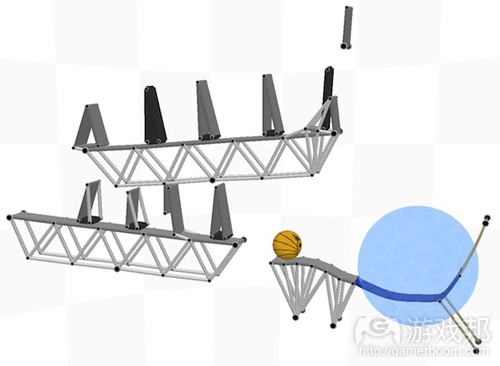
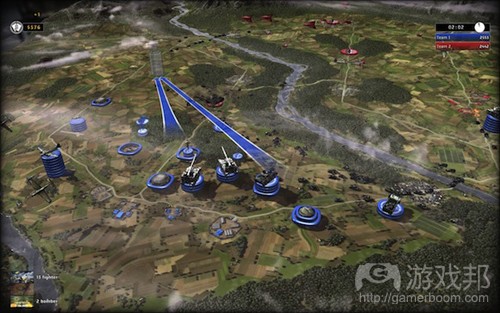

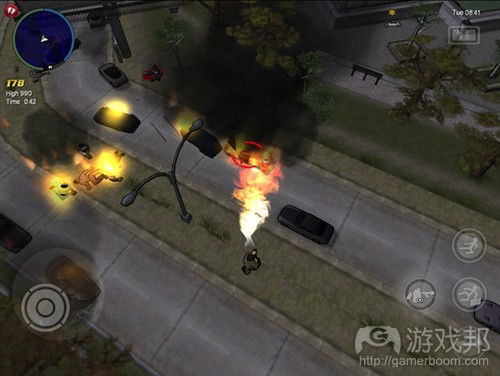

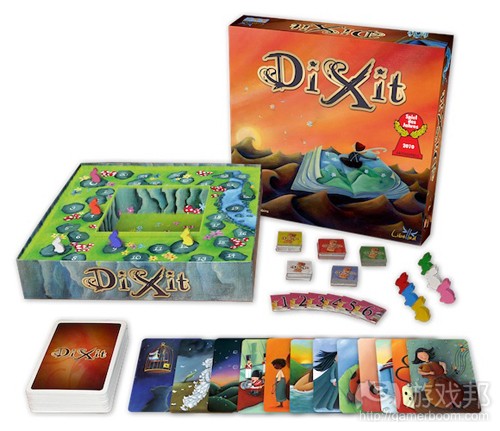
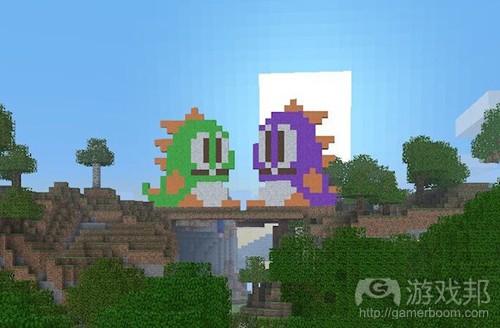














 闽公网安备35020302001549号
闽公网安备35020302001549号